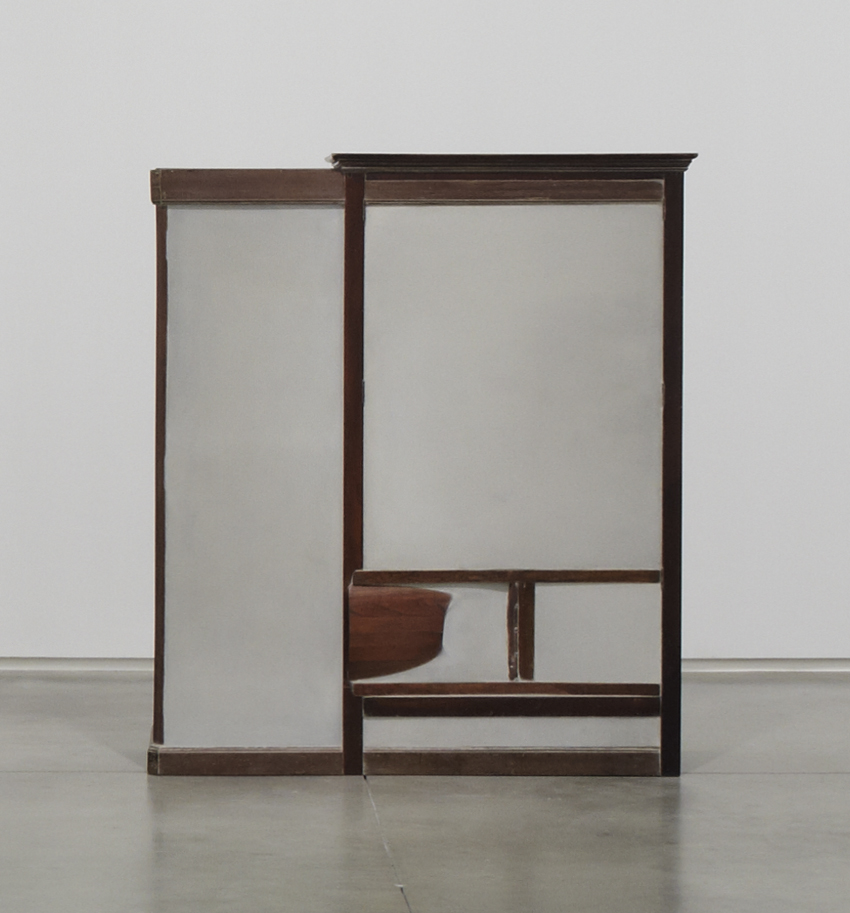
Doris Salcedo, Untitled, 1998. Wood, concrete, and metal, 72 × 62 × 21 inches (182.9 × 157.5 × 53.3 cm). Gift of Barbara Lee, The Barbara Lee Collection of Art by Women. Courtesy the artist and Alexander and Bonin. © Doris Salcedo
Since the mid-1980s, Doris Salcedo has addressed the effects of criminal and political violence through sculptural works and installations that bear witness to death, loss, and pain. Collecting testimonies from individuals living in rural Colombia, she both honors the memory of lives lost and contemplates the frequently invisible nature of trauma.
In many of her works, Salcedo employs an uncomfortable combination of domestic furniture and building materials such as concrete and steel. Instead of engaging the traditional methods of sculpture, such as carving or molding, she makes her work through acts of physical and symbolic violence: filing, scratching, bending, beating, fusing, melting, and burying. In Untitled, an armoire’s interior has been filled with cement. The gray cement surface appears perfectly smooth except for the wooden chair that has been turned on its side and embedded in the lower right-hand corner. Salcedo’s careful application of cement elicits both fullness and emptiness. The material weight of the wood and cement suggest fullness, while there is a literal emptiness in what is missing—clothing and personal belongings—and a visual emptiness in the opacity of the gray cement. Variations of light and dark waver across the surface, creating the illusion that the cement is shifting. The small empty space almost hidden behind the back of the chair offers a momentary break in the solidity of the sculpture. With this subtle void, Salcedo furthers the tension and heightens the lingering sense of loss. By distorting the familiar, her work transforms our perception of home from a space of comfort and safety to one of disorienting dislocation.
Untitled forms part of the ICA/Boston’s strong and ever-expanding collection of sculpture, as well as holdings that investigate themes of war and violence. It joins works by Kader Attia, Louise Bourgeois, Willie Doherty, Mona Hatoum, and Yasumasa Morimura that visualize social and political violence.
2014.34